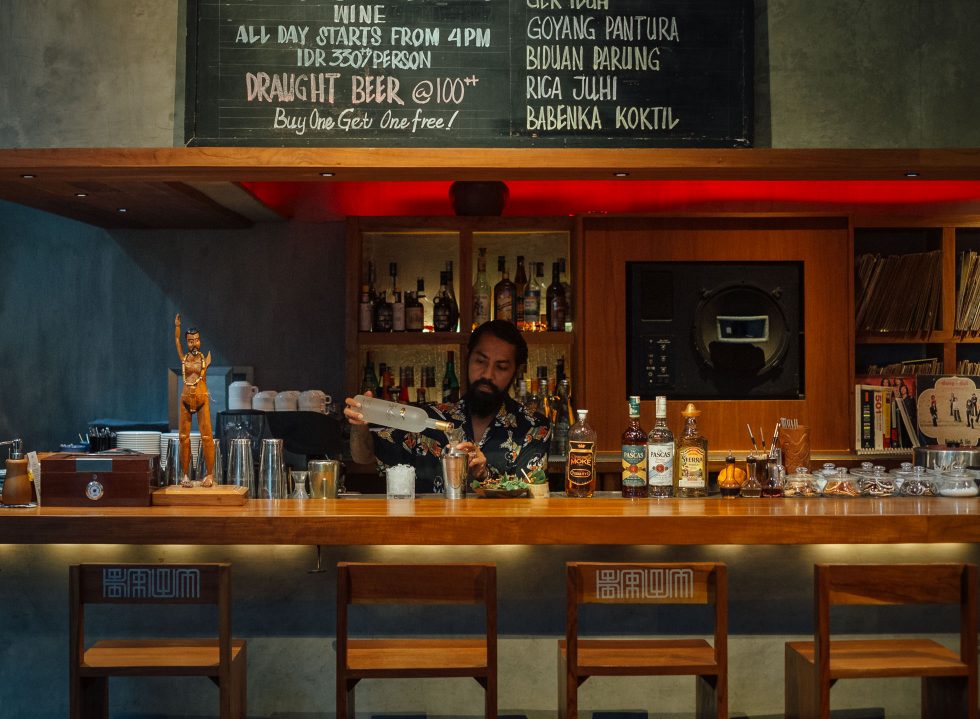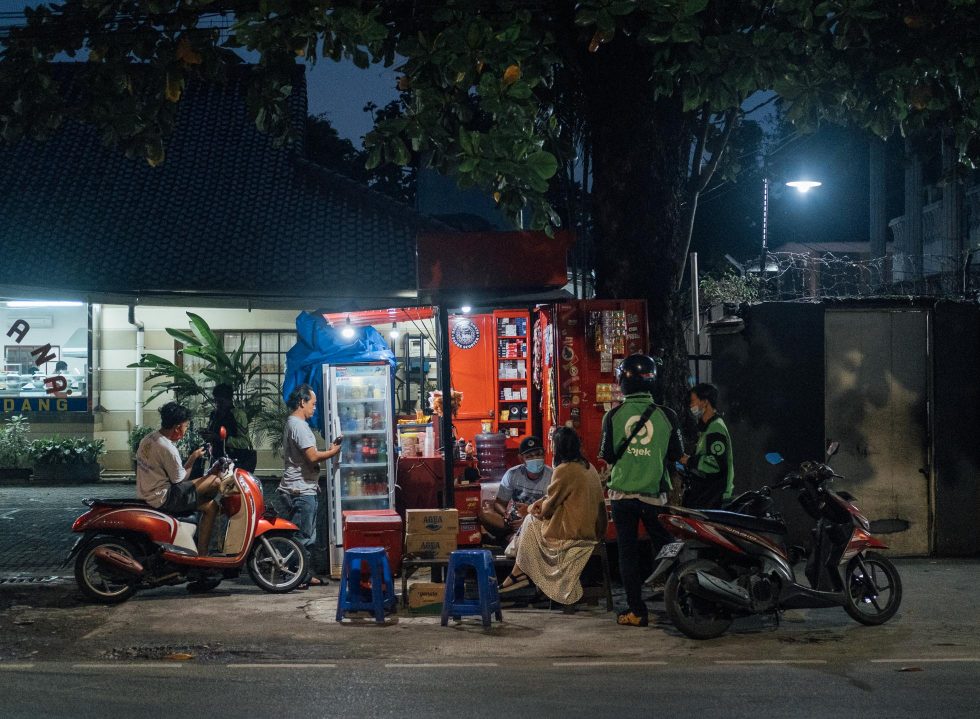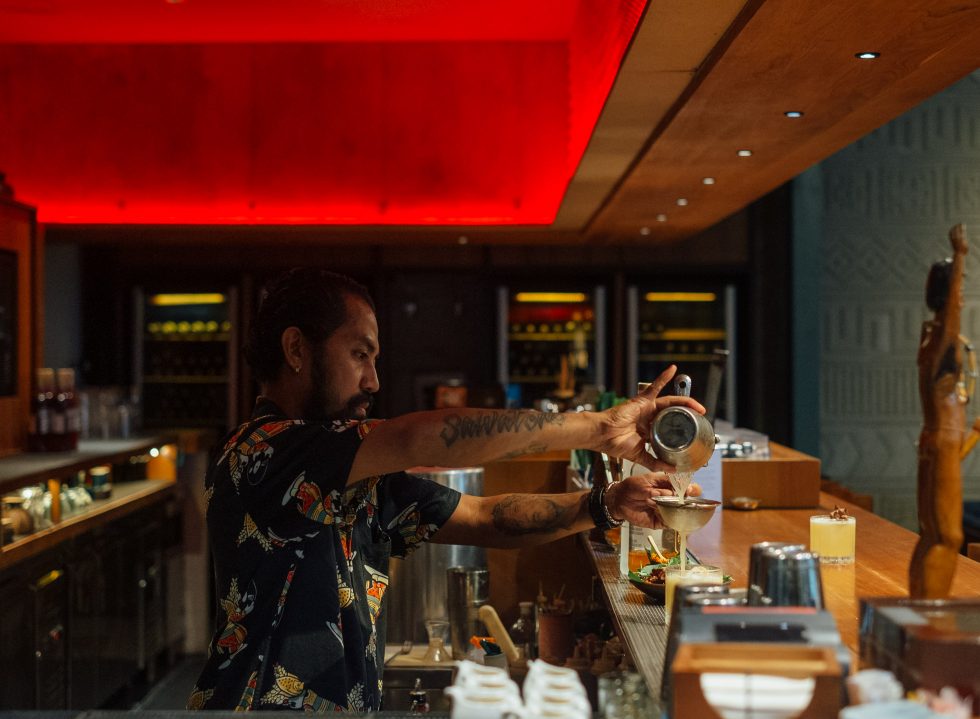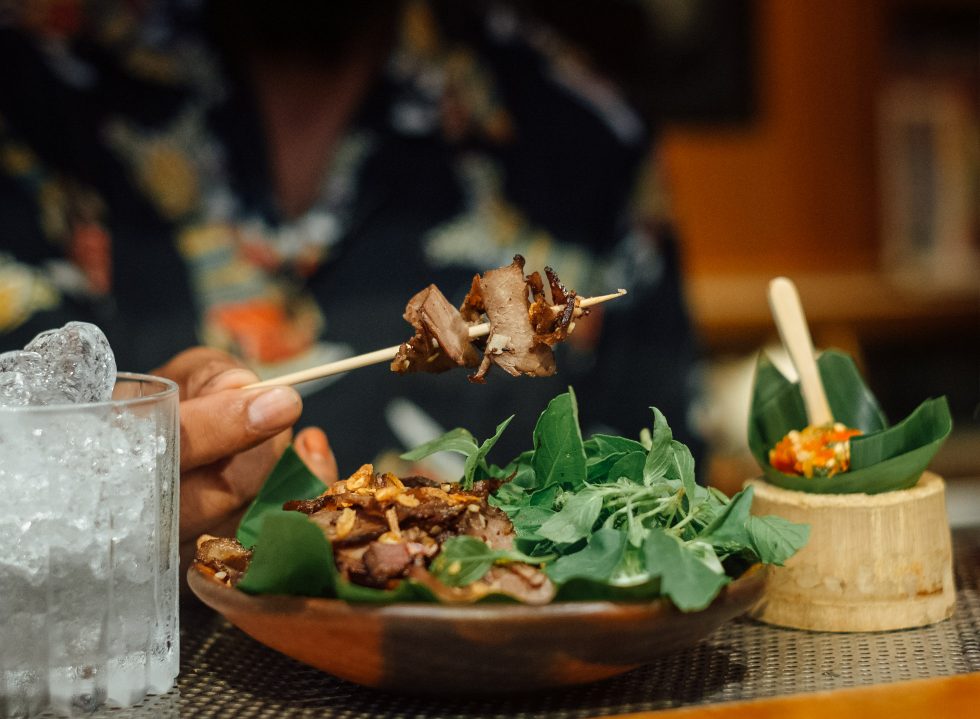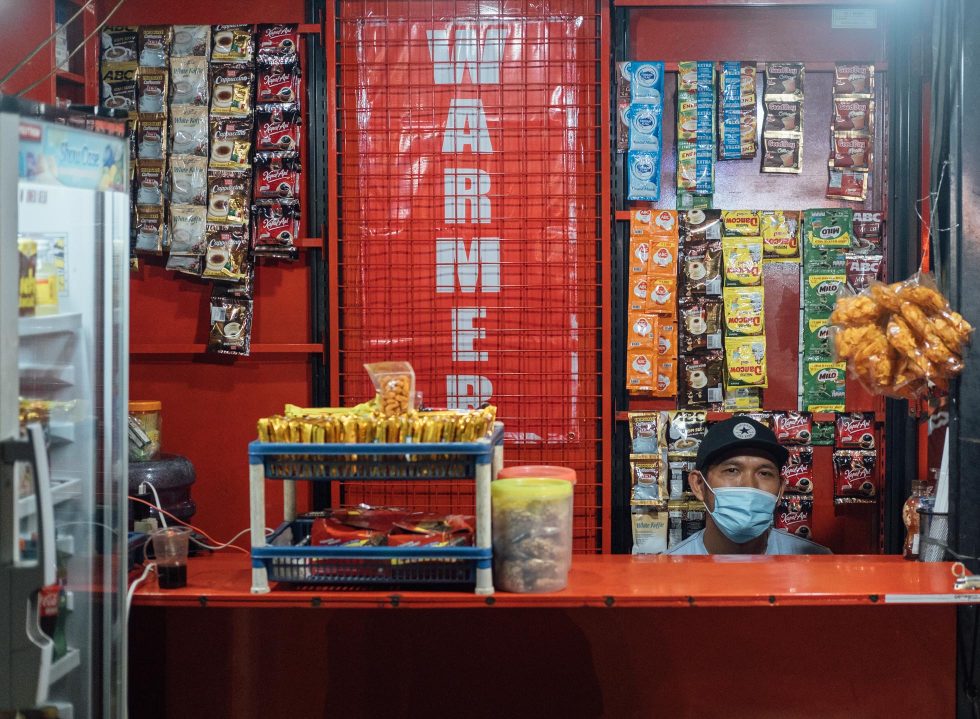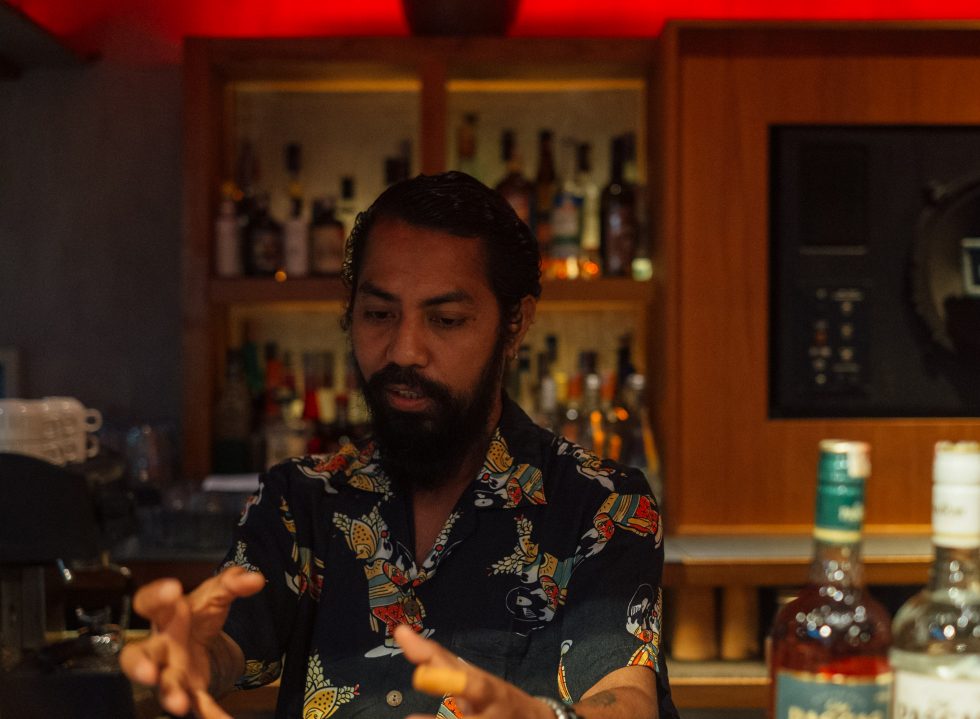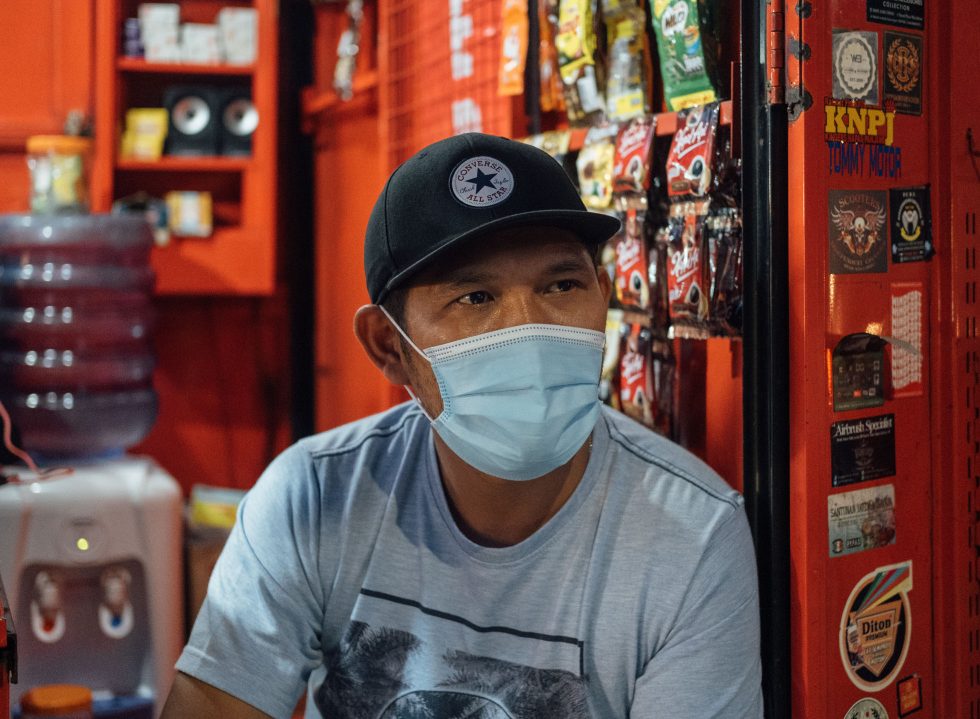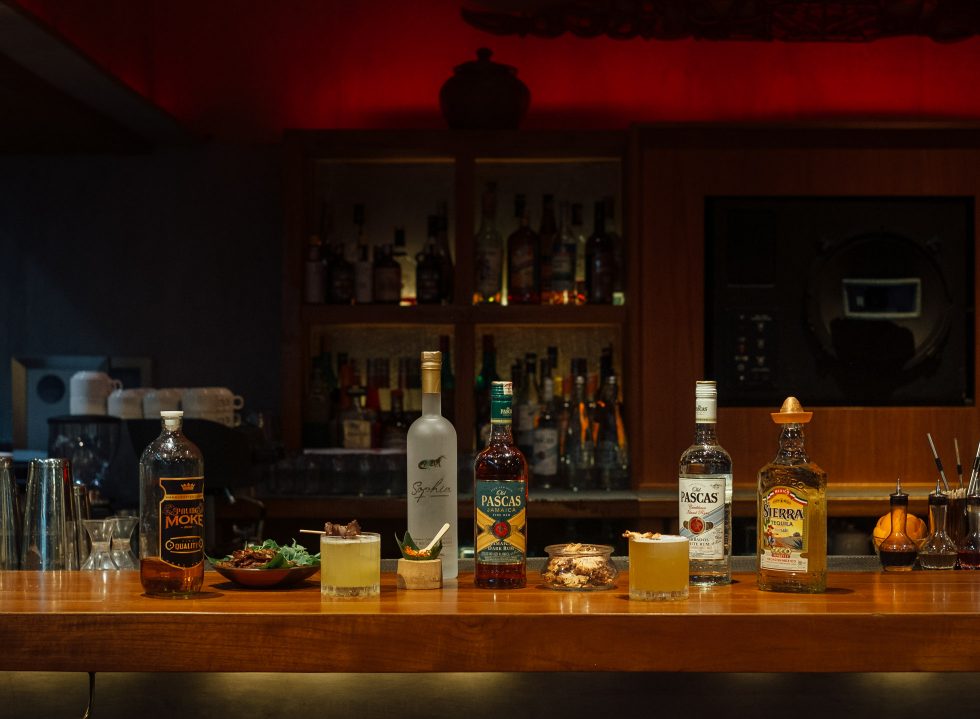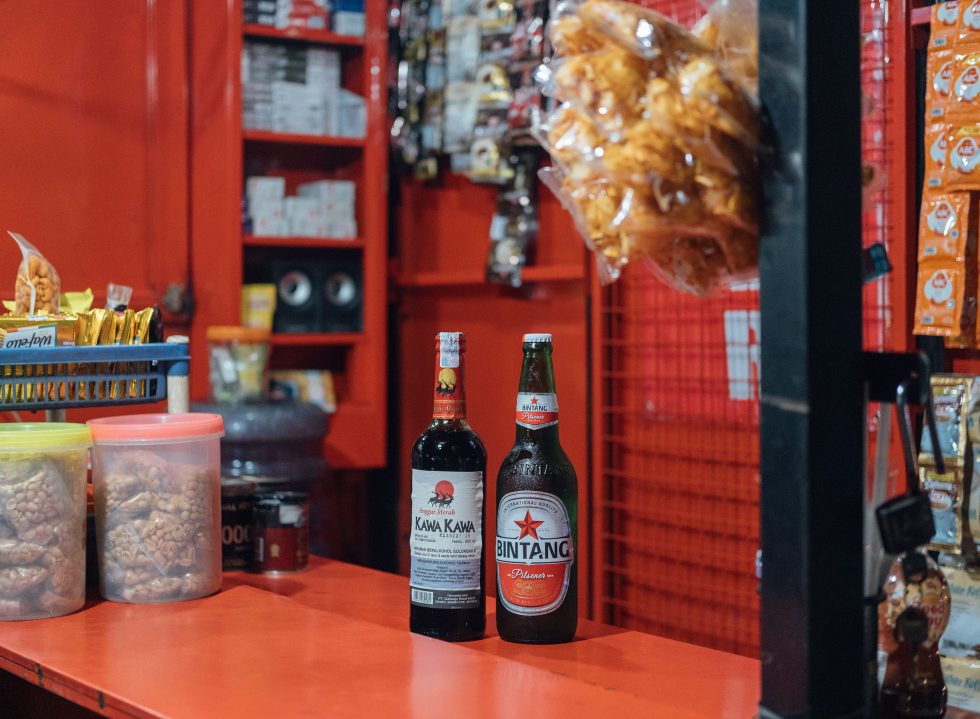Before amer (an abbreviation of anggur merah, literally red wine) became a staple among the local underground subculture and local beer brands with the likes of Bali-based Kura-Kura blossomed in the bar scene, alcohol and spirits have claimed their place in Indonesian native societies well before the dawn of modern civilisation. Within the foregone Javanese empires, tuak, Nusantara’s own palm sap wine, was served in royal banquets. Elsewhere in Kalimantan, the fermented beverage plays a bigger role than a substance designed to animate celebrations—to its Dayak tribe, the drinks persevere with appreciations for life and birth.
Today, alcohol isn’t shy in celebratory moments or daily occasions, but with the evolving socio-cultural changes that occur in modern life, alcoholic beverages weigh a different image: from abuse of alcohol production (bootleg or oplosan) to religious fanaticism, these plights marked a controversial impression on consumptions of the beverage and even led to the recent deliberation of alcohol-prohibition law, which stimulated a public uproar for its unreceptive undertone.
Despite the diverging views that weigh the latter-day drinking culture, the practice goes beyond lifestyle in Indonesia and is a legacy to a vast number of native communities. In this in-depth, we revisit the roles of our traditional tipples and how the modern lifestyle adapts to their comeback.
Alcohol in Indonesian Tradition and Literature
In a crusade to set Sitha free, Prabu Ramabhadra went into remote jungles, ascended hills and fought troops after troops of villains, and for each and every loyal underling he lost, Hanuman, his patriotic right-hand and monkey commander, would pour a bottle of spirits for the pack before they carry on with the mission.
This is the Hindu-Javanese tale of Kakawin Ramayana, whose story is materialised in Bali’s theatrical plays and is the literary embodiment of the Borobudur and Prambanan temples. The ritual of drinking spreads colloquially throughout the story and it was mentioned frequently for a reason: literature, like any forms of art, is a reflection of the society one lives in, and the spiritual (and non-spiritual) culture of drinking has thrived since the ancient Javanese dynasties when the tale was written.
“[Alcoholic beverages] are part of our traditions because they are a concrete manifestation of our roots as Indonesians and our nature as human beings,” observed researcher and anthropologist Irfan Nugraha, a lecturer in University of Indonesia and an active member of Negeri Rempah, a non-profit cultural organisation with the mission to promote Indonesian history and multiculturalism to the young. “[Alcohol] is common in many ethnic groups in various parts of the world, but what makes it a polemic is that alcoholic beverages can be seen beyond its materiality as a drink.”
This speaks true to ancient traditions with the likes of Buddha Tantrayana, a spiritual discipline adopted by the Javanese Hindu-Buddhist kings of Singhasari where drinking tuak is a prerequisite to achieving enlightenment (sunya) and ultimate gratification beyond one’s mortal existence (paramananda), as told in the Javanese literature Serat Pararaton.
The presence of alcohol in religious practices remains intact in parts of Indonesia, namely on the island of Bali. “There are many varieties of arrack. We can even dissect its classifications and functions,” said 26-year-old Bali native I Gusti Bagus Dharma Santhika Putra or Ajung, who resides in Jakarta as a music showrunner and arrack-maker.
He grew up in Tabanan, a regency seated about 35km west of Denpasar, where traditions involving the Balinese arrack are still well and alive. “For religious processions, Balinese use arak tabuh to shower their sajen (holy offerings) as a way to thank The Divine.” He also recalled the old tradition that takes place before Galungan holiday—the Balinese celebration of the good (dharma) over evil (adharma)—where men would bond over cooking sajen and drinking arrack in the kitchen.
According to Irfan, this kind of tradition highly affects the status of alcoholic beverage in a community, be it by “being a part of religious ceremonies or simply a ‘tool’ to build intimacy among its members.” While this ritual is still a taboo to many, Ajung described its purpose as “to celebrate the beautiful moment, instead of just getting wasted.”
Into the Modern Times
In the Nusantara-themed KAUM restaurant in Central Jakarta, Head Bartender and mixologist Pius Hadimore Ebang, sat in front of two tall bottles of Indonesian spirits: they are moke and sopi from the Timor islands, where he was born and raised.
The fermented beverages, which derive from palm trees, hold a deep-rooted influence on the local communities that stretch from Sumba to Pius’ home in Flores. The drinks differ in technique: moke goes through palm sugar processing, while sopi is made of pure fermented palm sap. “Back home, my mother would infuse orange peels, cinnamon or clove into these drinks to add more flavour. This technique sounds sexy and modern in the bar scene, but I’ve been doing it since I was very young,” he shared.
Last November, KAUM showcased a bar takeover “Tuang Dulu: Kupang, Kupangku” initiated by Pius himself. That day, the bartender got creative with sopi-and-moke-based cocktails as a way to pay tribute to his dearest homeland of East Nusa Tenggara, together with his fellow flairman, Henry ‘Ale’ Maraben. The Flores and Kupang natives spruced up the bar with their own take on the local spirits: the repertoire included the Luat (sopi, tequila, chilli and kemangi), Flobamorata (whiskey, moke, Kopi Flores and sandalwood) and Rumpu Rampe (moke, white rum, citrus and papaya leaf).
“Our hometown is known as the fishermen’s island. Before they take off to the sea, they would pour a bottle of moke into the ocean in honour of their ancestors who have died in boating accidents. Then, they would pour it into glasses and everyone on the boat would have to drink it,” recalled Pius. “The ‘Kupang, Kupangku’ takeover is a token of my appreciation and gratitude towards our Melanesian town and its cultural riches.”
This passion for Nusantara’s rich offerings is also felt deeply by epicurean and Co-founder of Beergembira Ade Putri Paramadita, who would travel from island to island for the sake of culinary exploration. “I learned that the traditional drinking culture is still intact in the remote island of Halmahera in the Moluccas. There, cooking goes hand-in-hand with music and drinking sopi, and even starts early at daytime. We can see that celebrating life is part of their culture,” expressed Ade, who is known for her active contribution in spreading knowledge about food and beers through her social platforms.
Appreciation towards Indonesian alcohol soon ensued the cultural initiatives by establishments like KAUM, who has won the attention of international clients and regulars in town. For the young urban-dwellers, Amer Orang Tua has won them by heart.
“I believe that Amer Orang Tua is growing even more in popularity in Jakarta due to their offline activations that tapped into large-scale music festivals or lifestyle hubs in the South,” Ade stated. “When it comes to alcohol, we have that calculative mindset where we question, ‘What can I get with this amount of money?’ and by far, amer is the most affordable.”
Founded in 1948, Anggur Orang Tua by the consumer goods company Orang Tua Group was initially a herbal drink consumed for its medicinal properties. Today, the company prides itself on an extensive line-up of snacks and beverages commonly found in supermarkets, but their most sought-after product, Anggur Merah, finds no place in stores.
A first-hand witness of millennials’ penchant for amer is Deny, the owner of a warung in Ampera that doubles as his alcohol-selling business. The drinks attract bands of youngsters on a daily basis, as shown by a waiting line of Go-Jek and young adults standing in front of his striking-red warung to pick up orders at night. “I started selling [alcohols] since 2013, and amer is constantly high in demand,” shared Deny, his phone loud with notifications from customers inquiring via the ride-hailing app.
Keeping up with the trend, his word-of-mouth transaction boasts a fascinating list of liquors, from Anggur Orang Tua, beers to varieties of soju.
Despite the secretive manner he adopted for his trade, Deny’s business selling alcohol doesn’t break the law. It is the negative impression of alcohol-selling and the surrounding neighbourhood of his warung that makes him an easy target for surprise raids and confiscation by public authority, which have happened a couple of times.
“We open from 6 pm to 4 am, and midnight is usually our busiest time.” Before the pandemic struck, Deny could sell up to 50 bottles of drinks a night with amer taking the lion’s share. During New Year’s Eve, his sales doubled. “Orders peak during celebrations like New Year’s, but the police raids are at its peak too, so we have to be careful.”
Enjoyed at hangout spots or at home, drinks like amer have become the highlight of social gatherings held by younger Indonesians, with playful abbreviations being part of their lexicons: “They would be their own mixologist, concocting Abidin (Anggur Merah Bir Dingin), Agnes (Anggur Merah Guinness), Injer (Intisari Bintang Zero) for fun. I think it’s fine as long as it’s done mindfully,” closed Deny.
Starting from Home
The rise of Nusantara-inspired cocktails and the revival of traditional tipples among millennials marks a new wave in the local alcohol industry, with many home-makers emulating fermented drinks. The approach varies from artisanal to spontaneous, catering to clients via offline and online stores. A case in point for thoughtfully-crafted local winemakers is the blooming KHAS Fruit Wine founded by Deddy Perkasa.
“I started KHAS Fruit Wine back in 2018 when the idea of experimenting with the fruit fermentation technique came to mind. The idea soon developed into a passion for introducing fruit wine to the local market.” Using tropical fruits and the land’s best ingredients, the brand distributes their products to shops that empower small artisans and local agricultural products, such as The Bulkstore & Co. and Naked Inc.
For Ajung, his new business venture of arrack-making stemmed from his longing for home. “Because I missed Bali so much, I started making nasi bali and complemented it with a homemade arrack,” he shared of his small enterprise-in-progress. Sourced from a community-owned marketplace in Bali, the arrack is served cocktail-style with flavours like mojito, rosella and coconut. “Our arrack cocktails are produced in Bali, and the spirits are sourced locally from there with the help of local and small co-ops.” With his mixologist friends in Bali, Ajung hopes to introduce new ways of savouring the traditional liquor to the savvy and up-to-date palate of young Jakartans.
KHAS Fruit Wine’s expectations eclipse the hope of thriving in the big cities with aiming for their international stride, since “local alcohol products are gaining more spotlight in the global market for its uniqueness and complexity of flavour that can’t be found anywhere else.”
In the Face of Controversy
Memoirs of our ancient drinking culture may have outlived the nation’s ebb and flow, but in a tech-oriented society where each has the right and freedom to express criticism or mere commentaries, whatever phenomenon that took place in the past easily becomes overshadowed: in the face of the modern-day conflicts and polarisation, history can be vulnerable.
In the case of our ‘drinking culture’ patrimony, the influence can be both gainful and detrimental. No matter how glorified, in the end, it’s all about breathing mindfulness and responsibilities when it comes to the ambivalent practice of drinking, and in places where alcohol is accessible and available anytime, the lack of control can result in worst-case scenarios that involve the deaths of many—as evidenced by the presence of oplosan sellers. And it is these shocking cases of negligence that have given our very own heritage a bad name.
In addition, alcohol is part of our ever-growing cultural fabric and its development through times is inevitable, as exemplified by inspired entrepreneurs that reveal a great potential in the culinary industry with their own takes on local spirits. Anything that tries to systematically prohibit alcohol is effectively hindering this evolution of culture.
The decision may lay in the hands of those in power, but it is up to the current generation how they want to appreciate this tradition. While the evolution of traditional spirits is exciting, there must be accountability on its consumers to preserve it. It’s a long way, but perhaps looking back to our traditions can ground us back.
